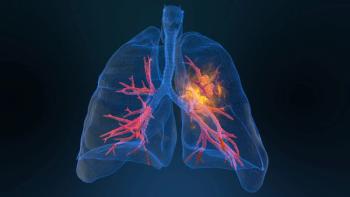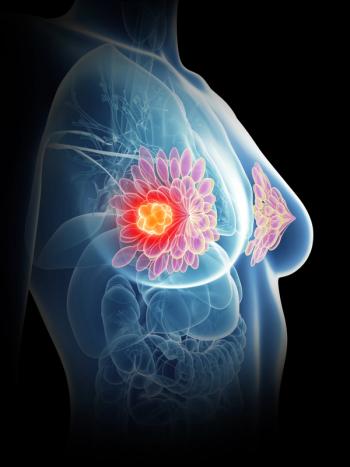
Genetic Mutations and Disease Progression in MDS Increased by Tobacco Smoking
Smoking may contribute to genetic mutations and disease progression in myelodysplastic syndromes, a recent study found.
Results from a recent study showed that, in patients with myelodysplastic syndrome (MDS), tobacco smoking can influence the disease’s multistep molecular pathogenesis through genetic mutations linked to the disease.
Results from the study, which were presented at the
“The most important take-home point of this study is we, as physicians and hematologists, can initiate the smoking cessation counseling in patients who are first diagnosed with myelodysplastic syndrome,” Sangeetha Venugopal, MD, MS, a physician in the Department of Medicine, Division of Hematology, at the Sylvester Comprehensive Cancer Center at the University of Miami, said during a press briefing. “Please stop smoking, and this will help delay disease progression.”
Venugopal and her colleagues assessed what tobacco smoking may do to MDS-specific pathogenic mutations, particularly the specific pathways. Compared with patients who did not smoke, those who did were enriched with pathways of mutations including the chromatin modification (15.3% vs 10.9%; P = .001) and RNA splicing (25.5% vs 18.6%; P <.001).
Researchers also identified the prevalence of individual mutations between patients who smoke and those who do not. These respectively included ASXL1 (12% vs 8%; P <.01), SF3B1 (9% vs 6%; P <.05), U2AF1 (6% vs 3%; P < .05), and ZRSR2 (2% vs 1%; P <.05).
“And these are all very high-risk mutations in the pathogenesis of myelodysplastic syndromes,” Venugopal explained.
Regarding tobacco smoking and disease progression in MDS, researchers demonstrated a dose-response curve related to smoking. Compared with non-smokers, smokers at the 75th and 90th percentile of pack-years had 1.8 times and 3.5 times, respectively, the number of mutations.
“This shows that the longer you smoke, [the] higher the incidence of disease progression,” Venugopal said.
The 5-year cumulative incidence of disease progression was significantly higher in patients who smoked compared with those who did not. In particular, the 5-year cumulative incidence of disease progression was 27% (95% CI, 19%-36%) in patients who smoked for at least 20 years and 18% (95% CI, 13%-24%) in those with fewer than 20 smoking years (P <.05).
Researchers also looked at overall survival in MDS and clonal cytopenia of undetermined significance (CCUS), which is a precursor for MDS, Venugopal explained. Overall survival was significantly lower in patients with CCUS who smoked compared with those who did not (HR, 1.91; 95% CI, 1.03-3.55; P = .04).
“In conclusion, tobacco smoking contributes to the multi-step molecular pathogenesis of myelodysplastic syndromes,” Venugopal said. “And the more…cigarettes smoked, or a longer duration of smoking leads to increased accumulation of mutations. Tobacco smoking does accelerate MDS disease progression and decreases overall survival in clonal cytokines of undetermined significance.”
Study Design and Demographics
Researchers utilized data from The National Myelodysplastic Syndromes Natural History Study, “which is the largest national history study to date,” Venugopal said.
“This study has granular level data in terms of the diagnostic category, medical history, comorbidity index, cytogenetics, and especially bone marrow assessments and gene sequencing,” she added.
In total, the researchers analyzed data from 1898 patients, of whom 919 were nonsmokers and 979 were smokers. Venugopal noted that approximately 52% of patients in the study were smokers.
The standard CDC definitions of pack-years were used in this study.
“The number of packs you smoke a day, times the number of years you smoke, that’s the pack-year” Venugopal explained. “And the smoking intensity is defined as light, medium, and heavy. Light is less than 10 pack-years, medium is less than 29 pack-years, and heavy is 30-plus pack-years.”
Of all the patients in the study, 61% were male and predominately between the ages of 70 and 79 (39%). Most patients had MDS (39%), followed by CCUS (36%).
“And when we looked at risk stratification, according to the International Prognostic Scoring System, we did not appreciate any difference between the smokers and the nonsmokers,” Venugopal said.
Cancer Progression and Increased Mutations
In the evolution of myeloid subtype of blood cancers, the risk for cancer progressively increases with the mutation number, Venugopal explained
“There is no clonal disorder with no mutations,” she added.
Clonal diseases, which include CCUS, low-risk MDS, and high-risk MDS, can potentially progress to an advanced malignancy, particularly acute myeloid leukemia or secondary acute myeloid leukemia.
Venugopal and her colleagues decided to look at the effects of smoking in patients with myeloid malignancies as a result of studies showing that mutations are produced in each cell in the larynx, pharynx, lungs, mouth, and bladder in those who smoked a pack a day.
Venugopal had no relevant relationships to disclose.
Reference
Venugopal S, Otterstatter M, DeZern AE, et al. Association between Smoking Intensity, Genetic Mutations, and Disease Progression in Myelodysplastic Syndromes. Presented at: 2024 ASH Annual Meeting; December 7-10, 2024; San Diego, California. Abstract 4597.
Newsletter
Stay up to date on recent advances in the multidisciplinary approach to cancer.


















































































